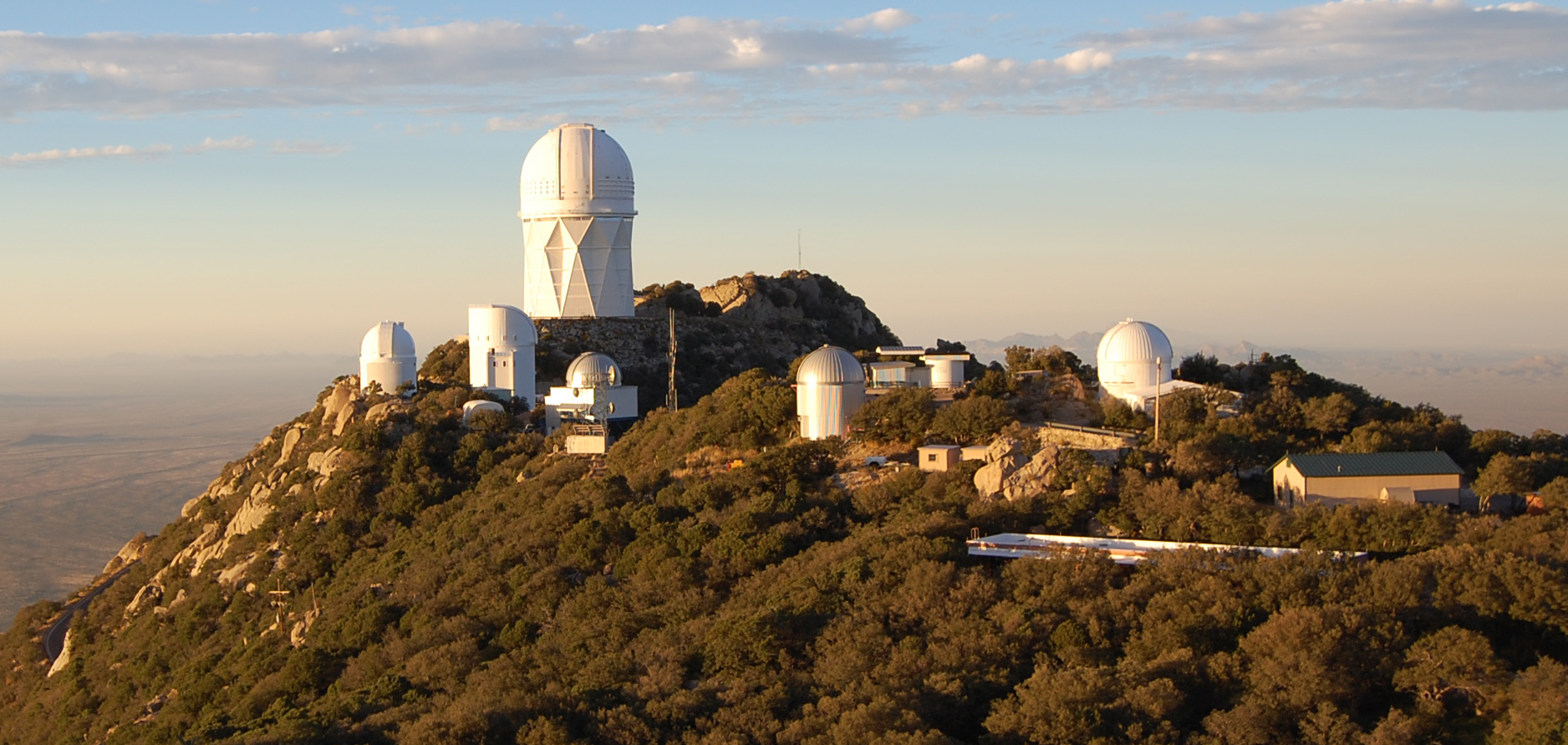Observatories

- Kitt Peak National Observatory southwest of Tucson, Arizona. Photo courtesy of the Univeristy of Arizona.
University of Arizona Super-LOTIS project
On September 1, 2008, UCO became a partner with the University of Arizona in the Super-LOTIS project. Super-LOTIS is a 24-inch robotic telescope located on Kitt Peak. This telescope, formerly on Mt. Hamilton, was significantly upgraded at LNLL and loaned to the University of Arizona.
Kitt Peak National Observatory (KPNO), part of the National Optical Astronomy Observatory (NOAO), supports the most diverse collection of astronomical observatories on Earth for nighttime optical and infrared astronomy and daytime study of the Sun.
Observer Information
The telescope is queue scheduled, makes multi-filter (B,V,R,I,Halpha) direct images and can rapidly acquire fields. UC astronomers have up to 1/2 of the observing time on the telescope.
All members of the UC community who are eligible to apply for Lick time are also eligible to apply for Super-LOTIS. To apply, send a very short description (2-3 sentences) of the project, along with a list of objects in the correct format--see below--to Xavier Prochaska (xavier@ucolick.org) and Dan Kiminki (kiminkid@yahoo.com), with cc to G. Grant Williams (ggwilli@mmto.org).
The Super-LOTIS queue scheduler uses a text file in which each row contains information about one target. It specifies a time (hr, min) at which observations for a given target will begin, and data for the target. The current format is:
hr min ra dec epoch exp(sec) nimages filter(s)(VRI) : object
All times are local, not UT, and on a 24 hour hour clock. That is, 04 00 UT would be 21 00 local, and, on the same night, 11 00 UT would be 04 00 local.
The RA and Dec are entered with no spaces between hours, minutes, seconds and degrees, minutes, seconds, with any number of decimal digits. A single target could occupy more than one row if for example the number of images or exposure times in each filter are different.
For example, suppose one wanted to observe the following on Oct. 1 UT.
Object W at 4:00 RA = 22 h, 17 min, 12.42 sec Dec = -12 deg, 7 min, 38.9 sec equinox 1900 3 exposures in R and I, exposure time 30 seconds in each filter
Object X at 9:23 Oct. 01 UT, with RA = 01 h, 10 min, 23.34 sec Dec = +25 deg, 14 min, 45.7 sec equinox 2000 5 exposures in both V and r, exposure time 2 minutes in each filter.
Observing list would be:
night of Sept. 30
21 00 221712.42 -120738.9 1900 30 3 RI : Object W
02 23 011023.34 +251445.7 2000 120 5 VI : Object X
Data Reduction
Xavier Prochaska has written a reduction package for Super-LOTIS data that he is willing to make available to users. Contact him directly (xavier@ucolick.org).
Transfer Data to Local Computer
The following provides information on how to request to have your Super-LOTIS data automatically transferred to your local computer. Once auto transfer is set up, you will receive your data the morning after it is acquired (Arizona time).
There may be potential security risks with this process and if you are concerned about those, you can always write your own scripts to grab the publicly posted data.
Send two emails with the following information:
First Email
- The name of the computer, e.g. slotis.kpno.noao.edu
- The operating system of the computer, e.g. Linux, OS X
- The account to which the data will be transferred, e.g. ggwilli. This doesn't have to be your username as long as the account exists. Since you'll also need to provide a password, you may wish to create a new account for this purpose alone.
- An optional subdirectory, e.g. data
Second Email
- The password for the account without any obvious indication that it's a password.
You will need to create a subdirectory with the same name as your Super-LOTIS webscope account. This is generally the username part of your default email. If you're not certain, I can provide this.
The data will be transferred to:
username@computername.edu:~/slwebscope_username/
OR, if you provide an optional directory:
username@computername.edu:~/optional_directory/slwebscope_username/
